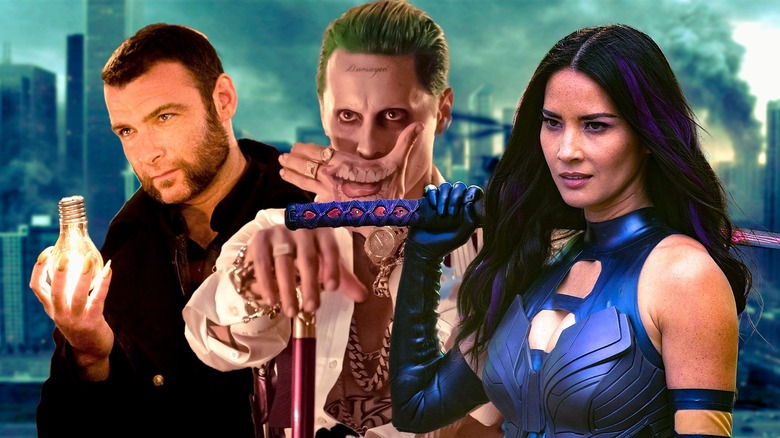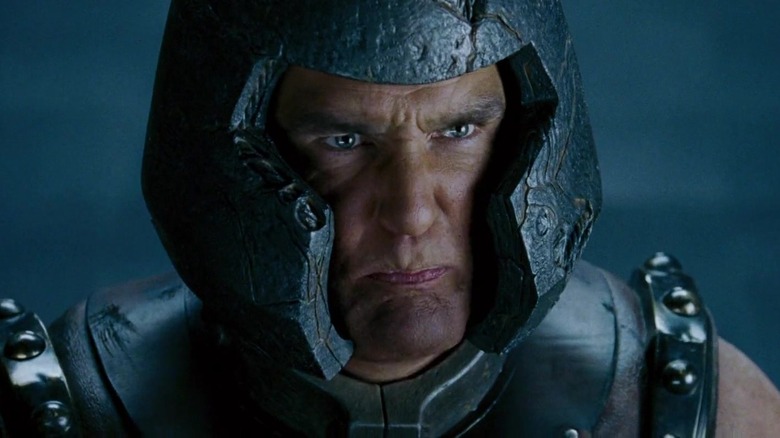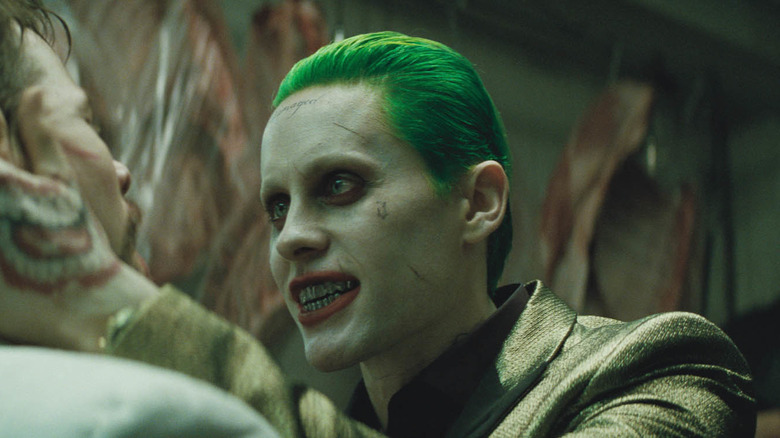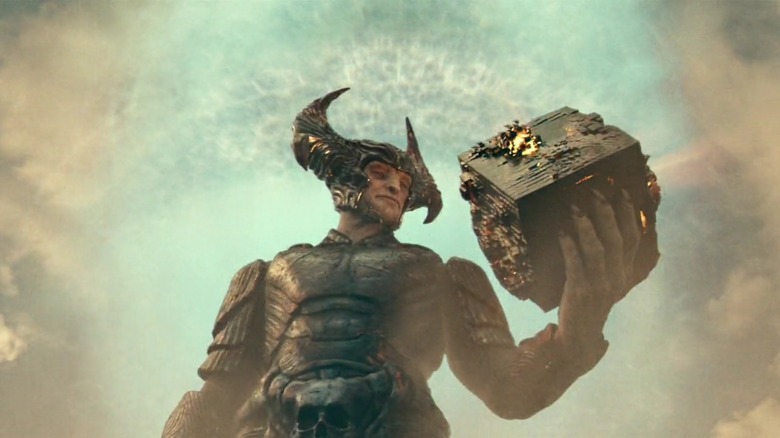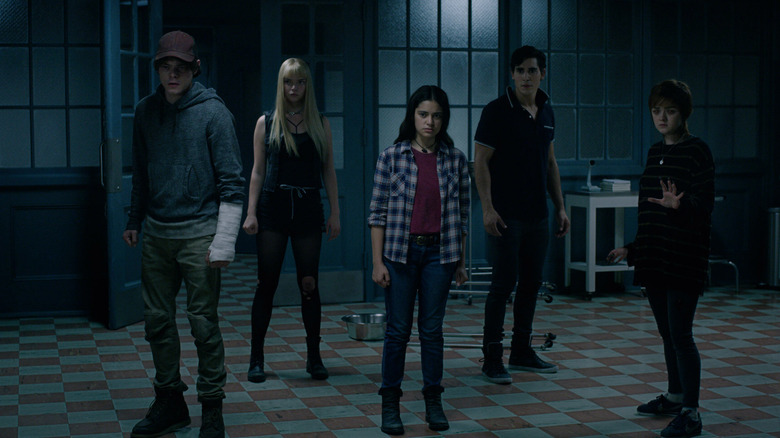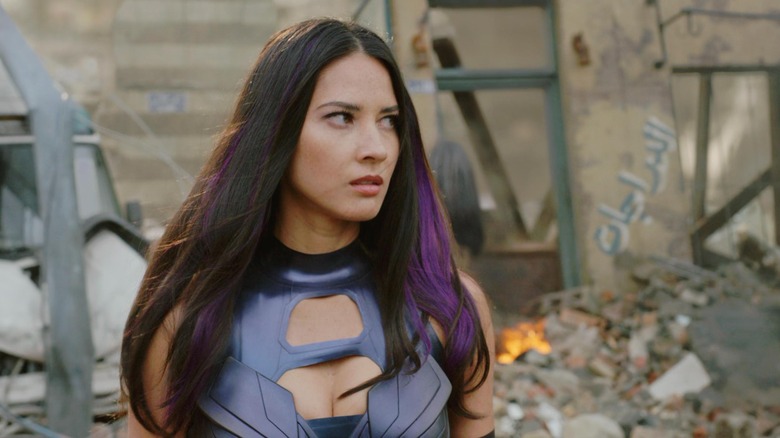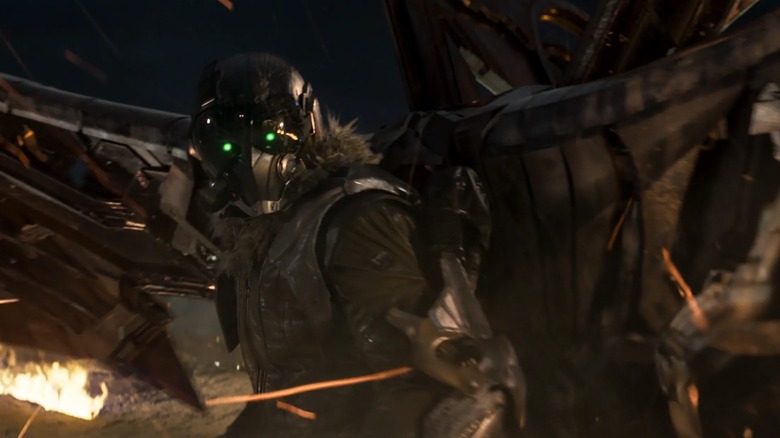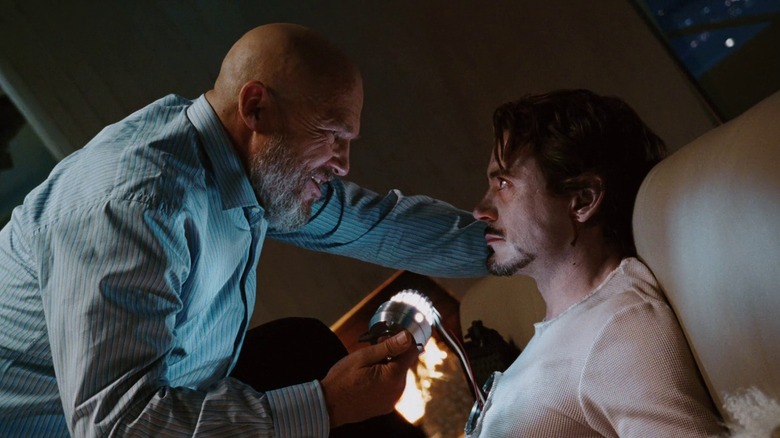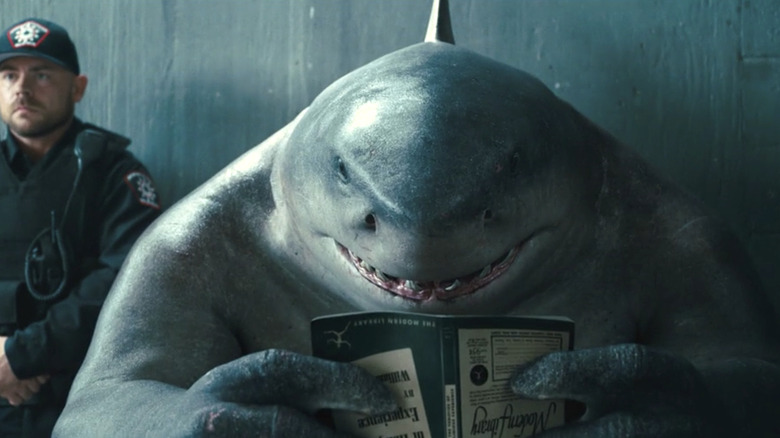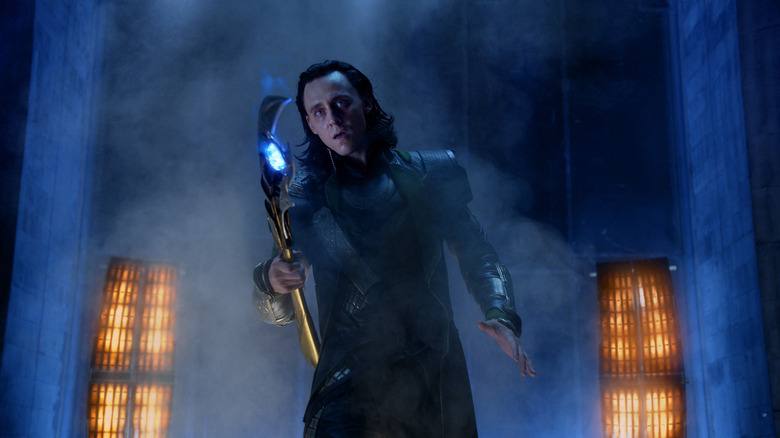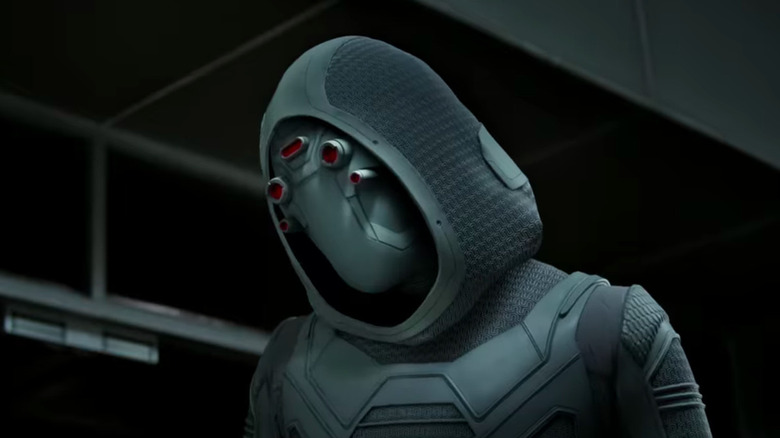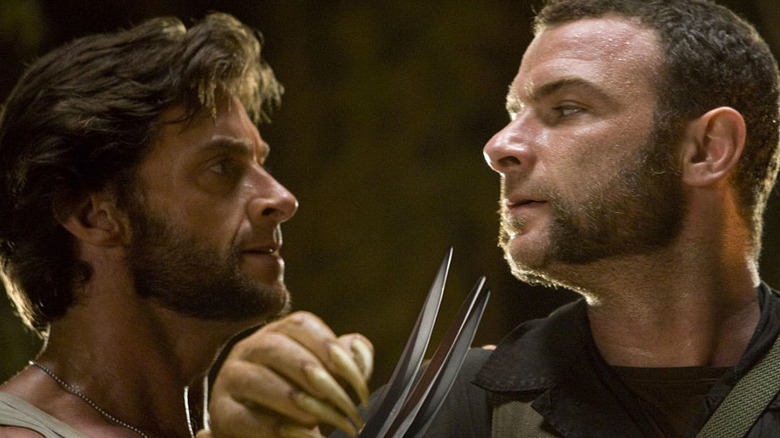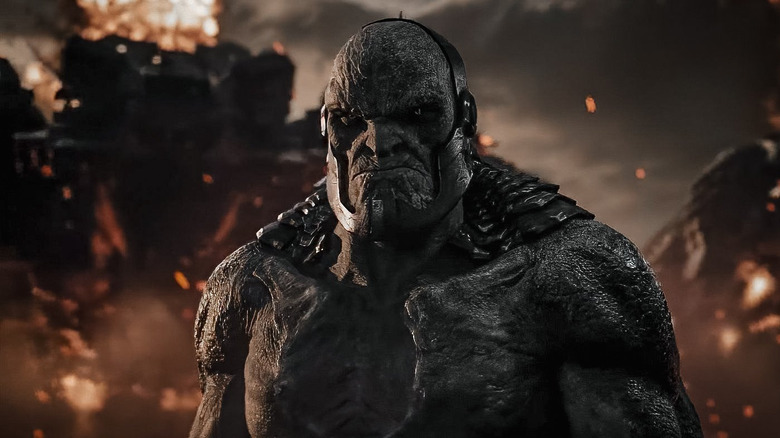12 Iconic Supervillains Who Were Cut At The Last Minute From Superhero Movies
Movies are always evolving during their production. No feature film comes out fully realized in the first draft of its screenplay. New ideas are always being added and subtracted not only as the script evolves, but also during other parts of the creative process like principal photography and post-production. Big-budget comic book movies are no different, with projects like "Dark Phoenix" often going through extensive reshoots during the last leg of production to drastically alter plot points and swap out characters. There are just so many moving parts on projects this gargantuan in scope that it's inevitable that the final films won't reflect earlier drafts.
The changes movies go through during production extend to their characters as well. No superhero movie is complete without its supervillain, but some superhero films jettison downright iconic baddies shockingly late into their production. Though it might seem like a foregone conclusion to work in adversaries like the Joker or Darkseid into your movie whenever possible, everything from larger external studio politics to simply the creative vision of a director has been responsible for deleting famous comic book baddies from superhero features. The villains cut from these superhero movies are fan favorites and world-enders. Some of them have been seen in live-action half a dozen times before, and some of them haven't been in a big-screen superhero film yet. But some way or another, each of these villains wound up on the cutting room floor, showing how even the most pivotal aspects of a movie are always a work in progress.
Juggernaut in X-Men: Days of Future Past
"X-Men: Days of Future Past" was always going to feature a sequence where Charles Xavier (James McAvoy) and Wolverine (Hugh Jackman) had to break Magneto (Michael Fassbender) out of a heavily guarded prison. However, what always shifted in this sequence was what super-powered mutant would help them in their efforts. In the final film, Peter Maximoff aka Quicksilver (Evan Peters) is the one who comes to the aid of our heroes, using his super-speed to help get out the man who may be his father. Originally, though, a radically different mutant was set to handle this scene, with the character being portrayed by a member of "Days of Future Past's" final cast.
Josh Helman portrays a young version of William Stryker in "X-Men: Days of Future Past," but the actor explained to IGN that he was originally hired to play a young incarnation of the Juggernaut. The role ended up getting cut, but Helman stuck around on the project in a different capacity. Writer-producer Simon Kinberg later clarified at the San Diego International Comic-Con that this version of the Juggernaut would have smashed through to Magneto's underground Pentagon prison by being dropped high up in the air and smashing downward toward the incarcerated mutant. Director Bryan Singer eventually changed his mind about using Juggernaut since the character had already shown up in "X-Men: The Last Stand," and Quicksilver was brought in instead.
The Joker in Batman v Superman: Dawn of Justice
There are a ton of characters in "Batman v Superman: Dawn of Justice." Though the film's title made it apparent that this film was going to involve Batman (Ben Affleck) and Superman (Henry Cavill), the final feature eventually also involves Wonder Woman (Gal Gadot), Lois Lane (Amy Adams), Lex Luthor (Jesse Eisenberg), and cameo appearances from the likes of The Flash (Ezra Miller), Aquaman (Jason Momoa), and Cyborg (Ray Fisher). One wouldn't think there would've been further room for even more cameo appearances by famous DC Comics figures, but originally, "Dawn of Justice" would've featured a legendary Batman baddie. Initially, the film was set to feature an appearance from the clown prince of crime himself, The Joker.
Zack Snyder explained to Collider in 2016 that the Joker, alongside fellow Batman antagonist the Riddler, was very nearly in "Dawn of Justice." Snyder said he and screenwriter Chris Terrio really love these villains and were excited about the prospect of seeing them in the movie. That passion ensured that the Joker's actions, like the murder of Robin, are referenced visually and in dialogue throughout "Dawn of Justice." However, Snyder said he felt that any time that would have been devoted to a physical version of the Joker should instead be spent fleshing out Batman and Superman's rivalry. Plus, it's not like the theatrical cut of "Batman v Superman: Dawn of Justice" left audiences yearning for even more DC Comics characters.
Steppenwolf in Suicide Squad
Steppenwolf has never been the most iconic DC Comics supervillain. With minimal appearances in non-comic media prior to the 2010s, it was surprising to see him feature so prominently in the DC Extended Universe. Not only is Steppenwolf (Ciarán Hinds) the primary antagonist in both versions of "Justice League," but he was originally set to be the villainous mastermind behind the events of the 2016 film "Suicide Squad."
Director David Ayer eventually confirmed on Twitter that the initial plot for "Suicide Squad" involved the Enchantress (Cara Delevingne) being swayed by a Mother Box and Steppenwolf, the latter of whom was supposed to be conjuring up an invasion of the planet Earth. Ayer's later tweets also confirmed that the Enchantress would've controlled an army of Parademons rather than a bunch of humans who had been turned into grimy mind-controlled soldiers. Considering these cut elements from "Suicide Squad" basically appear in the final version of the film but with different names and appearances (Steppenwolf would become Enchantress's brother, Incubus, played by Alain Chanoine), it's clear these elements were still around deep into the film's production.
Ayer said that the "Justice League" story eventually forming around Steppenwolf and the Mother Boxes meant he had to change his plans. "Suicide Squad" experienced an incredibly chaotic production, and the shifting of plans involving Steppenwolf is emblematic of just how messy the film's creation was.
Mister Sinister in The New Mutants
The production of "The New Mutants" proved so tumultuous that it would make for the basis of a much more entertaining movie than the final cut of "The New Mutants." Among the many bizarre twists and turns "The New Mutants" took in its journey to the big screen was constantly shifting rumors over which comic book character would show up in its post-credits scene. Initially, there were ambitions to get Jon Hamm to show up as Mister Sinister, which would've finally brought this X-Men baddie to the big screen after being teased in movies like "X-Men: Apocalypse."
Hamm later divulged to Yahoo Entertainment in 2022 that this wasn't just a rumor — he was indeed approached to take on the role of Mister Sinister. The "Mad Men" star said he grew up as a big fan of the "New Mutants" in the comics, which meant that he was incredibly excited to get the opportunity to show up in "The New Mutants" as such a famous villain. However, deep conversations over Hamm taking on the role never translated into any concrete. Hamm confirmed that he never shot anything for the movie. "The New Mutants" eventually eschewed a post-credits scene entirely rather than find another actor to inhabit the role of Mister Sinister. This unrealized supervillain cameo is just one of the many ways "The New Mutants" never quite found its footing or executed its grandest creative ambitions.
Psylocke in Dark Phoenix
At the end of "X-Men: Apocalypse," the camera lingers on the supporting villain Psylocke (Olivia Munn), alive and well, and walking away to parts unknown. Psylocke's role in the film is minimal — the character barely speaks any lines and has little in the way of an established personality. But the filmmakers' choice to emphasize this moment indicated that there were plans to keep following the mutant in future "X-Men" outings. Munn talked about her future in the franchise in September 2017 in an interview with Collider, where she didn't officially confirm she'd appear in the "Apocalypse" sequel "Dark Phoenix," but her vague responses and refusal to deny she'd show up indicated she was set to return in this feature.
However, by the start of 2019, Munn confirmed to ET Canada that she wasn't in "Dark Phoenix" after all, with scheduling conflicts with her work on "The Predator" ensuring she couldn't come back as Psylocke. An interesting detail, though, is that Munn mentioned explicitly in 2017 that "Dark Phoenix" was supposed to span two movies, a plan that outlets like Deadline later reported got curbed in pre-production. While schedule conflicts ensured Munn couldn't appear in "Dark Phoenix," both Munn's knowledge of this original plan and her initial optimism for showing up in this sequel indicates that Psylocke was one of the many characters who got kicked to the curb once "Dark Phoenix" was cut down to just one movie.
The Vulture in Spider-Man 3
There are many moving parts in the screenplay for "Spider-Man 3," but believe it or not, there almost were even more recognizable characters running around in this film. Initially, there were plans for Ben Kingsley to appear in "Spider-Man 3" as the Vulture. This particular adversary of the wall-crawler would've fit right in with director Sam Raimi's love for vintage Spider-Man baddies and could've made for another colorful foe in this franchise.
Thomas Haden Church, who took on the role of Flint Marko aka the Sandman in the film, told Joblo that the initial plans for the Vulture would've been for the character to show up only briefly in the movie. This figure's presence would've been limited to a tease at the beginning and a small re-emergence at the end, with the latter appearance supposed to indicate that would've been the primary foe of the sequel to "Spider-Man 3."
Church's comments about how the film radically evolved make it apparent that Eddie Brock aka Venom (Topher Grace), who wasn't in the original concept for "Spider-Man 3," eventually elbowed into the movie and pushed out the Vulture. This left the promising casting of Kingsley as this character unrealized. Raimi never got to work with the Vulture — though he would have been the lead villain in a proposed but ultimately canned "Spider-Man 4" — but Kingsley later broke into comic book movies with "Iron Man 3." Meanwhile, the Vulture, after sitting on the sidelines for so long, made his live-action film debut a decade after "Spider-Man 3" with "Spider-Man: Homecoming," where he's played by Michael Keaton.
Ezekiel Stane in The Avengers
When the Avengers assembled for the first time on the big screen, they squared off against Thor's (Chris Hemsworth) half-brother, the trickster god Loki (Tom Hiddleston). It was a showdown harkening back to the very first comics appearance of the team, where Loki also served as the main antagonist. Initially, though, writer-director Joss Whedon had some concerns about Loki serving as the film's sole main baddie. Speaking to Thrillist in 2018, Whedon said he worried that having all these heroes square off against just one villain would prove underwhelming. "I ... worried that one British character actor was not enough to take on Earth's mightiest heroes, and that we'd feel like we were rooting for the overdog," Whedon said.
This is where Ezekiel Stane came into the picture, with Whedon writing a draft of "The Avengers" with Ezekiel functioning as an equally intimidating villain next to Loki. Though not a well-known villain on par with the Green Goblin or Doctor Doom, Ezekiel Stane would've connected to the very first Marvel Cinematic Universe adversary, since he is the son of "Iron Man" villain Obadiah Stane (Jeff Bridges). However, this way of connecting to an earlier Marvel outing was eventually eschewed as "The Avengers" moved further into production. In the end, Loki was all the villainy this team needed anyway to produce a great summer blockbuster.
King Shark in Suicide Squad
One of the most enjoyable characters in "The Suicide Squad" is Sylvester Stallone's King Shark. A big guy with lots of brawn but not too much in the ways of brains, King Shark delivers some of the most humorous moments of "The Suicide Squad," juxtaposing his extreme strength with an often childlike demeanor. "The Suicide Squad" writer-director James Gunn even managed to explore some tangible pathos with such a preposterous critter, like a scene where King Shark wistfully watches people go about everyday life through a bus window. This unforgettable appearance from King Shark is the first time the character appeared in a live-action movie, though there were initially plans for this DC Comics mainstay to show up in an earlier DC Extended Universe project.
"Suicide Squad" director David Ayer confirmed on Twitter in 2016 that originally, the film's line-up of supervillains and baddies contained King Shark. Given that the character is a fixture of the group in the comics, it would've made total sense for the team's first big-screen incarnation to use him. However, Ayer didn't feel at ease working with an entirely CG character among the film's main leads, so King Shark was jettisoned in favor of Killer Croc (who was realized through makeup effects and played by Adewale Akinnuoye-Agbaje). Forgoing King Shark here just opened the door for "The Suicide Squad" to utilize the character years later and deliver a truly inspired vision of this villain.
Loki in Avengers: Age of Ultron
Thor's escapades in "Avengers: Age of Ultron" went through a lot of revamps. Specifically, a moment midway through the movie where Thor takes a detour to a pool of water in a cave for information on how to defeat Ultron (James Spader) was constantly reworked. "Avengers: Age of Ultron" is a very outlandish film, but it's very much rooted in sci-fi tomfoolery, whereas this sequence is a lone digression into fantasy hijinks. There was constant back-and-forth on how "weird" to make this sequence or even how many elements from Thor's fantasy side of the Marvel Cinematic Universe should get incorporated.
This included cutting an appearance by Loki in this "Age of Ultron" sequence, which stuck around long enough in the production to actually get filmed. Loki actor Tom Hiddleston explained to Digital Spy that test audiences got extremely confused by Loki's presence, with many presuming that he was controlling the film's main villain, Ultron. As a result, Loki's "Age of Ultron" cameo got canned and Idris Elba's Heimdall was the only member of Thor's supporting cast to show up in this fantasy sequence. With this deletion, "Avengers: Age of Ultron" missed out on some Hiddleston antics and became the only entry in the "Avengers" franchise to date to not feature the god of mischief in some capacity.
Ghost in Iron Man 2
In "Iron Man 2," Tony Stark aka Iron Man (Robert Downey Jr.) doesn't just have to battle with his own demons and the dad he never really knew. He's also got to contend with a pair of villains in the form of the vicious Ivan Vanko aka Whiplash (Mickey Rourke) and the wealthy and egotistical Justin Hammer (Sam Rockwell). The latter character was once supposed to have a much more elaborate plan than squaring off against Stark with a guy carrying a long-simmering grudge. Per the book "The Story of Marvel Studios: The Making of the Marvel Cinematic Universe," Hammer's evil plan initially included recruiting several super-powered baddies beyond Whiplash.
Among those adversaries would've been Ghost, a figure that debuted in the comics as a foe of Iron Man. Given these origins, not to mention the character's relatively obscure nature, it would've made total sense for Ghost to just show up as one of many supervillains in "Iron Man 2." However, Ghost and the other characters Hammer would've worked with, save for Whiplash, were eventually ditched during production. As the plot got streamlined, Ghost ended up on the cutting room floor. However, this didn't spell the end of Ghost in the Marvel Cinematic Universe. This character would eventually show up in "Ant-Man and the Wasp" played by Hannah John-Kamen and is slated to appear in "Thunderbolts."
Sabretooth in Logan
"Logan" doesn't entirely throw out the preceding "X-Men" movies (it is anchored by Hugh Jackman and Patrick Stewart, after all), but it does largely exist separate from those earlier blockbusters. To make sure Wolverine (Jackman) and Xavier (Stewart) feel truly disconnected from the world and alone, older friends and foes from vintage "X-Men" titles are largely absent, at least in a physical on-screen capacity. However, there were initially plans to have "Logan" connect directly to "X-Men Origins: Wolverine" by featuring one of that movie's antagonists in a cameo role. This character would've been none other than Liev Schreiber's Sabretooth, the half-brother of Wolverine.
Jackman said to Collider that he and director James Mangold tried throughout the production to find a spot where Sabretooth could've been worked in. At one point, a script was even produced that had this version of Sabretooth showing up as the powerful owner of a casino in Oklahoma (a location that still makes an appearance in "Logan"). However, this concept never made it into the final cut of "Logan," which was likely for the best. While it could've been cool to see Schreiber inhabit the Sabretooth role in a proper movie, having another previously established "X-Men" character in "Logan" might have disrupted how intentionally isolated that film feels from the larger "X-Men" universe.
Darkseid in Justice League (theatrical cut)
Darkseid is a massive threat within the DC Comics mythos. He's a cosmic entity created by Jack Kirby in 1970 who has proven to be a formidable challenger to all superheroes who cross his path. It would have made sense for him to show up in some capacity in "Justice League," the first-ever live-action big-budget appearance of a team of DC Comics superheroes. However, fans would have to wait until the 2021 feature "Zack Snyder's Justice League" for the character's on-screen debut, where he's played by Ray Porter. In the original 2017 cut of "Justice League," Darkseid was nowhere to be seen.
Though a prominent part of Snyder's original vision of the movie, Darkseid was deleted from the initial version of "Justice League" as part of the film's lengthy reshoots overseen by director Joss Whedon. With the film under a strict mandate to be streamlined, an on-screen appearance for Darkseid was just one of the many things that ended up on the cutting room floor. "Justice League's" main villain, Steppenwolf, still name-drops Darkseid after he uses one of the powerful Mother Boxes, but the character is otherwise absent from the feature and never appears on-screen. While many famous villains have been cut from comic book movies during production, Darkseid's exclusion from "Justice League" is especially notable given how iconic the character is. At least fans of this adversary would finally get to see him realized in a live-action project years down the line in "Zack Snyder's Justice League."
